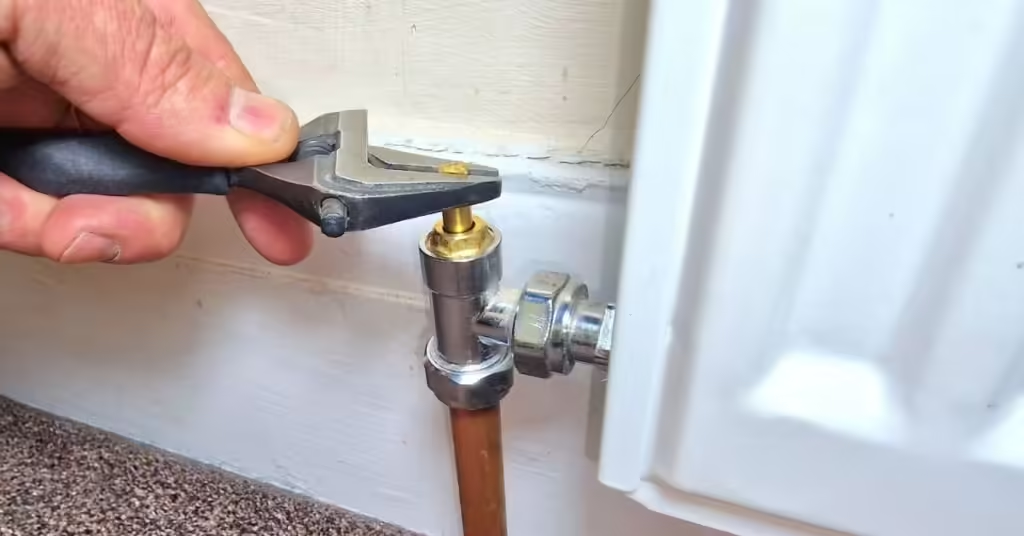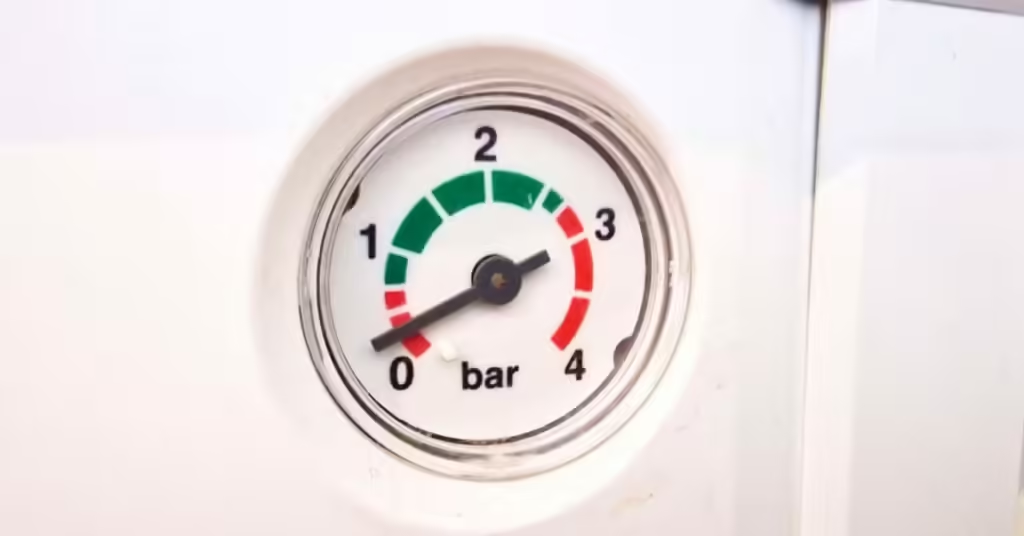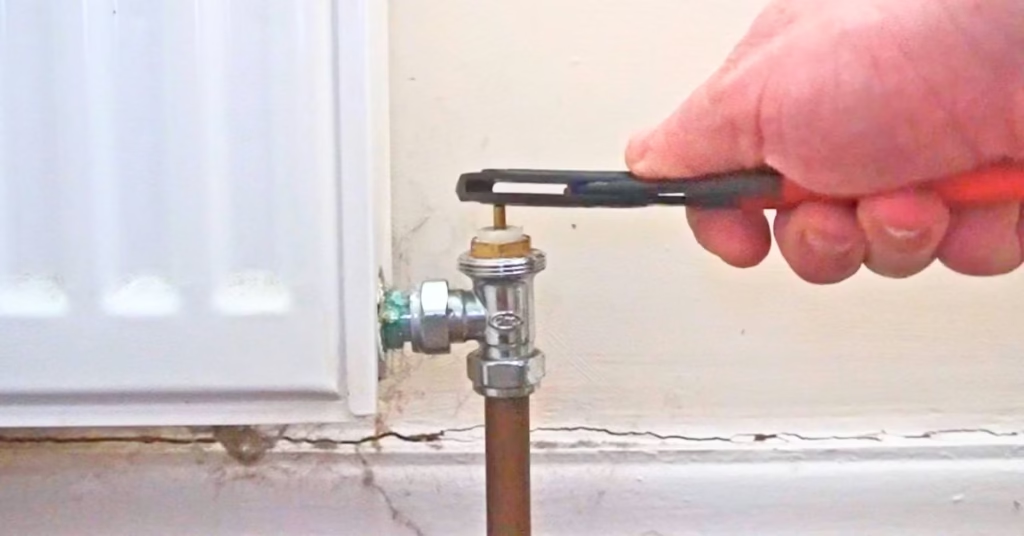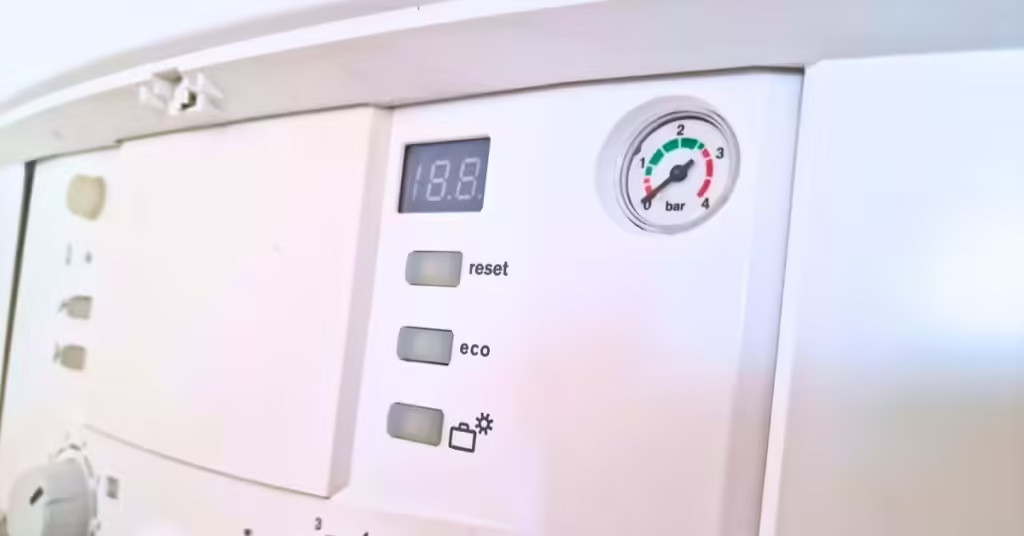Last updated on March 2nd, 2025
An airlock in a radiator pipe can cause a radiator or multiple radiators not to work. Airlocked radiators are annoying and will cause rooms to be cold. I have been a full-time heating engineer for over a decade and have cleared many airlocks without ever using a hose or removing a radiator.
Do you have airlocked radiators?
A radiator not working is an airlock symptom but an airlock is not the only possible cause.
Other causes of a radiator not working:
- The radiator valve is turned off, blocked, stuck or broken
- The thermostatic valve is on the wrong side (only old TRVs as new ones are bi-directional)
- The radiator needs bleeding
- The radiators need to be balanced
- The radiator is not piped up correctly under the floor (only on a new radiator installation)
- The designer radiator flow pipe is on the wrong side (some new tall radiators need the flow going into a specific side)
How to clear an airlock
If you recently drained the central heating system, there is almost certainly an airlock preventing the radiator from heating up.
Here’s how I clear an airlock:
- Turn the heating on
- Close one valve (TRV or lockshield) on every radiator apart from the radiator(s) not getting hot
- Wait for the airlocked radiator(s) to get hot
- Bleed the radiator that is now hot
- Open every radiator valve
If you have more than one radiator airlocked and only one becomes hot after closing the valves, close a valve on the airlocked radiator that is now hot and wait for the other radiators to get hot.
How to close radiator valves
You must turn off the radiators by closing either one of the valves.

Thermostatic radiator valves
Turn the head on the valve clockwise until it’s on zero or off.
Lockshield valves
Turn the lockshield radiator valve clockwise as far as it will turn. You can turn some lockshield valves with your hand, but for some valves, you will need to remove the cap and turn the spindle.
To turn the spindle, you can use:
- An adjustable spanner
- Some water pump pliers
- Or sometimes a hex key is needed
Video
Radiator still not heating up?
If the cold radiators still don’t heat up after closing all the valves on the hot radiators, then it won’t be an airlock causing the problem you have.
Airlock in a gravity-fed system
Having air trapped in a gravity-fed central heating system can be a nightmare. It can cause the boiler to overheat and keep cutting out.
If you have problems with a radiator or two not heating up, you can follow the process above. But if the boiler is not firing up or cutting out, you will need to remove all the air. Removing the air can take all day as hardly anything comes out, you have to just keep plodding on.
Here’s how I do it:
- Turn the heating on
- Bleed the radiators
- Bleed the bleed valve (typically in the hot water cylinder cupboard)
- Bleed the central heating pump
- Repeat, repeat, repeat until the boiler stays fired up
Summary
You must turn off the valves on the hot radiators to force the heat to the cold radiators. The full force of the central heating pump will push the air out of the radiator pipes and into the top of the radiator which can be bled out.
I get airlocks regularly after draining and refilling central heating systems, this method gets rid of the trapped air every single time. If it doesn't, it won't be an airlock problem you have.
Feel free to ask any questions in the comments below, and I’ll do my best to help. If you found this post helpful, please consider sharing it.





forgot to mention the 2 radiators in question are down stairs, 1 in lounge 1 in cloak room. radiator in hall which is between them is working fine.
I have 2 radiators which are cold. Other radiators ok. Radiators do not have trapped air as they have been bled. Have put drain on bleed valves and switched system on and some bubbles appeared and then cleared, water flow seems good and water gets warm. on refitting bleed v/v and system put on radiators are stone cold again. Do i have a blockage/air lock in return legs. how can i clear it.
System was drained ( not by me ) and they have not worked since,
It is an open vent gravity system.
Thanks.
turn the heating on and turn all the hot radiators off
Hi Steven, followed you advice for clearing an air lock (combi boiler system) but no joy.
Fitted 2 tall radiators in the summer, TRVs and lockstops fitted on same sides as the original rads – all was tested and was OK. Now the heating has been on for a week and was OK, but in last 48 hours the 2 new rads are now cold – the flow and return pipes are also cold. Any ideas other than a drain down and re-fill?
Sounds like the system might need balancing.
borrowed an infrared thermometer and did just that – all the return pipes are about 15 degrees cooler than the flow now and all seems to be OK, thanks
Nice one!
Thank you very much! This fixed my problem within minutes!
Thank you! Your advice on how to clear an airlock worked first time, and so easy to do! Now we have a hot radiator in our cloakroom.
Good to hear Steve, glad you got sorted and appreciate the feedback!
It’s a great relief clearing an airlock, and it’s a lot easier if all the radiators have TRVs.